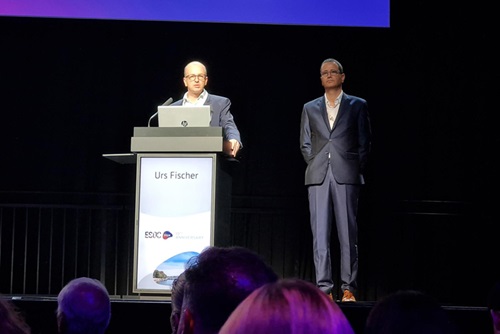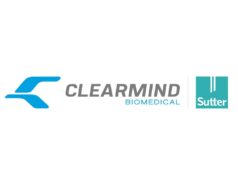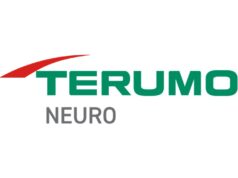
Despite the study very narrowly failing to meet its prespecified primary endpoint, the SWITCH randomised controlled trial has shown a substantial treatment effect with decompressive craniectomy procedures in people with severe, deep supratentorial intracranial haemorrhage (ICH). These findings were presented for the first time at this year’s European Stroke Organisation Conference (ESOC; 15–17 May, Basel, Switzerland) by Urs Fischer (University Hospital of Bern, Bern, Switzerland) and Jürgen Beck (University Hospital Freiburg, Freiburg, Germany).
“I think SWITCH informs us about a substantial effect of this treatment in a population with no evidence-based therapy [available to them] so far,” Fischer said, responding to a question from the audience on whether the results indicate equipoise between surgery and medical therapy in this patient population. “The main question you, as a clinician, now have to discuss with the patients and their families is whether a modified Rankin scale [mRS] of 4 is something you would like to achieve, or not. Decompressive craniectomy does not increase the proportion of people who are bedridden or die [mRS 5–6]. I think all the evidence from these large trials should now be translated into clinical practice and, at the end of the day, it remains a personal decision.”
The SWITCH trial was conducted at 42 stroke centres across Europe in an effort to explore the potential benefits of decompressive craniectomy in these particularly severe ICH patients. While recent, large-scale studies like ENRICH have linked positive outcomes to early, minimally invasive surgical evacuation in selected patients with superficial brain haemorrhages, the SWITCH investigators believe the effective treatment of deep ICH remains a “major unresolved issue”, as surgical evacuation is still yet to demonstrate decreased rates of disability or death.
SWITCH saw researchers attempt to ascertain the long-term outcomes of decompressive craniectomy in patients with deep brain haemorrhages. They enrolled adults aged 18–75 years, with severe, deep ICH affecting critical areas of the brain—including intraventricular haemorrhages—and assigned them to either decompressive craniectomy plus best medical therapy (BMT) or BMT alone. Despite being halted prematurely due to funding constraints, the trial enrolled a total of 201 patients. Four did not consent, leaving 96 patients to be allocated to surgery plus BMT (average age, 60 years; 67% male) and 101 to BMT alone (average age, 61 years; 69% male). Ultimately, 95 patients in each of these two groups were included in primary endpoint analyses.
Regarding its primary endpoint—the proportion of patients with an mRS score of 5–6 at six months—the SWITCH trial closely missed demonstrating the statistical superiority of decompressive craniectomy plus BMT versus BMT alone, as 56% and 42% of patients, respectively, achieved mRS 0–4 in the two groups. These figures led to a risk ratio (RR) of 0.77 and risk difference (RD) of −13% (p=0.057), which became significant with an RR of 0.76 and RD of −14% (p=0.042) once the data were imputed. Other key secondary endpoints revealed a statistically significant improvement with surgery versus medical therapy on mRS shift analyses, as 53% of patients in the craniectomy-plus-BMT group achieved mRS 0–4, compared to 40% in the BMT-only group (common odds ratio, 0.57; p=0.039).
Delivering the investigators’ interpretation of these results, Beck stated that decompressive craniectomy plus BMT in severe, deep supratentorial ICH “may be superior” compared to BMT alone, but “the evidence for that is weak”. He also noted that, while there were no safety concerns in the surgical group relative to the medical group in the SWITCH trial, survival was associated with severe disability in both groups. Beck went on to echo Fischer’s point on the possible impact these new, “high-quality” data may have in terms of informing physician and caregiver decision-making regarding the treatment of severe, deep ICH patients.
The investigators did also highlight several potential limitations of SWITCH, including the fact the trial was stopped early and may therefore have become underpowered; the trial’s “narrow” inclusion and exclusion criteria; its long recruitment period across more than 40 sites; and the occurrence of crossover from the surgical group to the medical group (1%), and vice versa (8%). Lastly, they referred to the fact that the trial involved a highly selective group of patients with severe, deep ICH and, as such, its findings may not apply universally across other ICH types, including superficial haemorrhages, and smaller, less severe haemorrhages of deep brain areas.
Despite statistical significance being narrowly missed with regard to the trial’s primary endpoint, the investigators feel that SWITCH highlights a “substantial estimated effect size” compared to previous research as well as a “high degree of certainty of benefit” with decompressive craniectomy. As such, they added that this intervention constitutes a potential treatment option in severe, deep ICH patients with no other evidence-based treatment options available to them—but, ultimately, SWITCH underscores the “urgent need” for further research into optimising care strategies for these patients.
Alongside Fischer and Beck’s presentation at ESOC 2024, these data have also been published in The Lancet.









